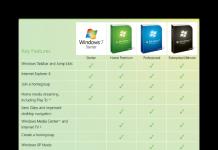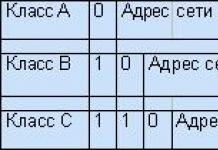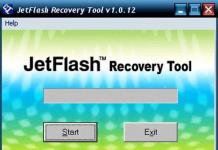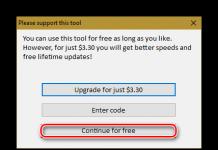The use of keyboard shortcuts allows you to increase the convenience of working in the operating system by reducing the time to perform various operations. Instead of searching the menu for an item that is responsible for any action, you press a few buttons and perform it instantly. In this article, we will talk about the main macOS hotkeys that work in system applications.
The Mac keyboard is different from the standard PC keyboard. It has fewer keys and no function block. The navigation buttons included in it, "Printscreen" and Delete are replaced by combinations. The standard keys that are also present on the PC are shown in green in the screenshot. Red marked specific, available only on the Apple keyboard:
- Option ⌥ . General system modifier. In many menus, pressing this button changes the items, opening additional functionality.
- Command ⌘ . Similar to the Win key. Most keyboard shortcuts on the MacBook require her input.

The screenshot below shows how the OS menu items change when the Option button is pressed. On the left is standard command output, and on the right is extended output.

Finder
In the Apple operating system, Finder performs the same role as File Explorer in Windows. This is a constantly running file manager. Most of the operations performed in it require the use of the Command key and have a rationale in English:
- ⌘ +C (Copy) - create a copy of a file or document on the clipboard;
- ⌘ + V - paste from clipboard;
- ⌘ +X (Excise) – cut the selected object out of the current window. In practice, the Finder performs this operation by default for files. The selected object is immediately transferred to a new window.
- ⌘ +A (All) - select all files in the current window;
- ⌘ +Z (Zero) - return to the original (zero) state. Undoes the last action taken by the user.
- ⌘ +E (Eject) - eject or disable the selected external media;
- ⌘ +T (Tab) – create a new tab in the current window;
- ⌘ + F (Find) - launch the search dialog in Finder;
- ⌘ +I (Inspector) - display the properties of the selected file in a separate window;
- ⌘ +Y - start quick view. Works similar to the spacebar;
- ⌘ +M (Minimize) - allows you to minimize the current window to the Dock;
- ⌘ +O (Open) - open the selected file in the default program.
To save screen space, you can reduce the side menu, leaving only frequently used folders in it, and use keyboard shortcuts to navigate to the rest of the sections. Pressing Option opens access to the system library hidden by default.

Similarly, you can use keyboard shortcuts to change how files are displayed in the Finder window.

The following screenshot shows the Cover Flow preview mode invoked by pressing ⌘4 .

Useful Combinations
Any Macbook, regardless of the version (Air or Pro), uses the same keyboard and operating system. On macOS, there is no separation between home and professional versions. Therefore, keyboard shortcuts will work absolutely identically on any model.
Screen lock
Sleep works well on a Mac. Moving away from the laptop, you can close the lid and, returning, continue working from the same place without worrying about the safety of files. However, sometimes just locking the screen is enough. For example, if you break away from work for a few minutes, but do not want to show it to anyone.
The combination Control + Command + Q gives this opportunity. A lock window is displayed on the monitor, and after a set time, the screen saver will start. The keyboard shortcut Shift + Control + Power allows you to achieve a similar result. In this case, the monitor power is turned off and it goes out, bypassing the screensaver stage. If the specified checkbox is checked in the settings, it will be possible to access the laptop only with a password.

Forced termination of programs
Any program, including a program that has stopped responding, can be force-quitted on a Mac. To do this, in the menu bar, click on the apple logo and select the marked item. As you can see in the screenshot, this operation can also be performed using hotkeys.

Option + Command + Esc brings up a simplified analogue of the task manager. In it we find the program that needs to be completed, and press the marked button.

Often this operation has to be done with the built-in QuickTime video player. After closing the main window, it tends to remain in memory without being displayed in the Dock.
Fine tuning
Setting the sound, key backlight, and screen brightness on an Air or other iMac has sixteen positions between "Min" and "Max" values. Management is carried out by the corresponding function keys of the top row. If you hold down the Shift + Option keys while making an adjustment, then each of the control positions will be divided into four parts.

Thus, you get not 16, but 64 points of adjustment. When the additional buttons are released, the system will first fill in the incomplete division and then automatically return to normal mode.
Screenshots
As we said earlier, Apple computers do not have a separate key for taking screenshots. The following combinations are used for screenshots:
- Command + Shift + 3 . Screenshot of the entire desktop;
- Command + Shift + 4 . Snapshot of the selected area;
- Command + Shift + 4 + Space . Snapshot of the selected window or menu item.
Download Modes
When you start macOS, before the first appearance of the apple logo, you can select the boot mode. These combinations can come in handy not only for reinstallation or troubleshooting:
- Option . Boot volume selection for dual OS systems. Thus, you can choose between macOS and Windows installed on the BootCamp partition;
- T. Starting the system in external volume mode. If you connect a problematic Mac to a working Mac, you can boot from its hard drive and perform initial diagnostics;
- Shift. Starts the OS in safe mode;
- Command + R Recovery from hard drive;
- Option+Command+R . Internet recovery mode. Reinstall or restore macOS from Apple servers.
Shutdown
In normal mode, the MacBook can be turned off or restarted using the system menu. To do this, it contains all the options available to the user.

For these purposes, you can also use various combinations:
- Control + Power . Calls the shutdown menu in a separate window;

- Control +Command +Power . An analogue of the "three-finger combination" for Windows. Causes a forced reboot;
- Option + Command + Power . Switching to sleep mode without closing the lid;
- Shift + Command + Q . Ending a user session with a warning;

- Shift + Option + Command + Q . User logout without warning. When you next log in, previously opened windows are automatically restored.
Keyboard settings
In the Sierra version, Apple has changed the language switching combination familiar to many Mac users. Instead of Command in combination with a space, the Control key began to be used. Many users first change this setting to a familiar and convenient one.
- Open System Preferences and select the marked item.

- Go to the "Keyboard Shortcuts" section. In the navigation area, select the item of interest to us. In the right part of the window, the given and possible, but not preset, combinations will open. For example, Launchpad can be called from the keyboard, but there is no default shortcut for it. Mark it with a tick and open the edit box. We enter a combination that is convenient for ourselves.

- If desired, hotkeys can be set independently. For example, in the Finder there is a "Compress" item, which does not have its own combination. If the need for archiving arises constantly, then it can be created. Switch to the marked section. Using the "+" button, we call up an additional menu. We choose the program. Enter the exact name of the item and set the desired combination.

- The result of the performed manipulations is visible immediately, a reboot is not required. Using a given combination, you can quickly create archives.

- In the first section of the keyboard settings, you can set how the top row of function keys is used. By default, they are used to quickly access system settings such as media or backlight control. Their traditional role is activated by pressing the Fn key in the lower left corner. In some graphic editors, these buttons are used quite actively. In order not to use a combination of two keys every time, you can return them to their direct assignment. To do this, put a tick in the place indicated by the arrow. Now, to add volume, you need to use not F12, but Fn + F12.

- Here, lovers of experiments can independently reassign the role of modifier keys. Pressing the marked button will bring up an additional menu. Using drop-down lists, you can set new values. For example, swap Command and Control .

Finally
Using various keyboard shortcuts is a matter of habit. If this is not directly necessary, then they can be perfectly dispensed with. The convenience of macOS is that they are listed in the menu of each program and, if desired, are easily remembered.
Video instruction
If this topic interests you, the overview video below will help you learn more about how hotkeys work and find the most useful ones.
If you often need to quickly open the desktop on your Mac, the best and fastest way to do this is with a keyboard shortcut. This will minimize all windows, programs, other information and show only the desktop. In this case, none of the programs will be closed.
With macOS keyboard shortcuts, you can quickly access files and other desktop content, or just instantly hide what you have open.
On a Mac, there are several ways to quickly show the desktop, including a trackpad gesture. We will tell you how to quickly open the desktop with a keyboard shortcut and two other methods. These methods work on all modern versions of Mac OS that support Mission Control or Expose.
How to Minimize All Windows on a Mac
First combination: Command + F3
The first combination with which you can quickly open the desktop: command (cmd) + F3 . Simultaneously hold down the Command key and the F3 key.

This will instantly activate the "show desktop" feature, and all open windows will be minimized.
To return to programs, just hold down Command + F3 again. Also all windows will come back if you open a new program.
The GIF below shows what this action looks like.
 How to minimize all windows on mac os
How to minimize all windows on mac os Second combination: fn + F11
Another way is to combine function + F11 . They will also need to be clamped at the same time.

The second combination works on the same principle as the previous one.
To hide the desktop and return to programs, press Function + F11 again or open a new window.
What to do if combinations don't work?
If for some reason the keyboard shortcuts on your Mac don't work, try the following:
- Go to the Apple menu and select System Preferences.
- Select Mission Control.
- In the Keyboard and mouse shortcuts section, find Show Desktop and select F from the menu next to it.
- Try holding down the F11 + function keys at the same time, the desktop should open.
The combinations should work even if the desktop is disabled, some icons are hidden, etc., but you will just see your wallpaper without icons.
Using Hot Corners
Step 1: From the menu bar, select the icon Apple > System Preferences > Mission Control.
Step 2: In the window that opens, select Active corners in the lower left corner of the screen.

Step 3: Select a corner to open the desktop when you hover over it, and then from the menu next to that corner, select Desktop.

The settings panel should look like this:

Hello dear friends! I must admit I have been planning to write this article for a long time and finally got it. This is more likely not even an article, but let’s say “a guide to hotkeys for a macdrive”, I myself am so used to using hotkeys that sometimes I look askance at people who, for example, close a program or tabs in a browser with a mouse, and not with the usual Command + W 🙂
But seriously, knowing even basic shortcuts allows you to save a lot of time and significantly increase the efficiency of your work. Mouse in the direction and let's go.
Short designations:
fn-Function key
Since the article turned out to be quite voluminous, for convenience, I decided to make a table of contents:
How to cut, paste, copy on Mac?
The keyboard shortcuts below work in almost all Mac programs and allow you to perform move operations on all kinds of files (text, music, folders).
Hot keys for screenshots
Keyboard shortcuts for changing boot options
In this section, you will learn how to boot your Mac using the keyboard. Keep in mind that the keys must be held down immediately after starting the Mac.
Completion of the session. Sleeping mode
Hot keys when working in programs
Suitable for most Mac programs.
Efficient work with text using hotkeys
Hotkeys in Finder
As you can see, the list turned out to be very impressive and not suitable for everyone, for those who, for example, work a lot with text, it will be useful, and for ordinary users it will be enough to know 15-20 hots from various areas. And for "photoshops" you can write a separate book in general 🙂
Cheasheet Utility (Bonus #1)
But there is one very intelligent utility that will always tell you which keyboard shortcuts are relevant for the program in which you are currently working, its name is . Using the program is extremely simple, install it and then hold Command until such a window appears (screen, by the way, from Photoshop):
One not unimportant point, since you need access to all Mac programs, then you need to give it permission during installation:
Now everything is ready to receive hints while working in any program, and in the future the necessary key combinations will be remembered by themselves and you will become a keyboard virtuoso.
Assign hotkeys ourselves (bonus #2)
It happens that the user often performs the same action and thinks how nice it would be to assign hot keys for him, but what is the actual problem? Let's look at an example.
Assign a shortcut to an action export in a programme View:
Open system settings > keyboard > keyboard shortcuts and look at the screen what to do next
In the window that appears, select the program, enter the EXACT name of the action to which we assign the shortcut and set the key combination:
Everything is ready, now images can be exported using ⌘+⇧+/
And at the end of the article, I want to say again that Mac OS hotkeys can significantly increase your productivity by focusing on the keyboard.
P.S. I am sure that I did not mention a couple of useful shortcuts, so I will be glad if you add to my list in the comments.
If on Desktop many windows are open, then to hide unnecessary ones in Dock we will have to do this with each window separately by pressing the yellow button ( - ) in the upper left corner of each window, or using the keyboard shortcut cmd+h or Cmd+M.
There is an easier way - hiding all windows at once, and then opening the ones you need. To hide all windows, you just need to press and hold the key combination Alt+Cmd, and then click on any window-free place on the desktop. All open windows will be hidden in Dock. Then click on the ones you need to open them. But that's not all. :)
Restore any hidden window with a simple click. Then, holding down the same key combination ( Alt+Cmd), click on any other hidden window. It will open, and the window opened first will hide. That is, you get the same effect with which we once.
Note
Holding Cmd+Alt you can click not only on hidden windows, but also on the icons of not running programs - such a program will start and hide all other open windows.
Small video demonstration


































